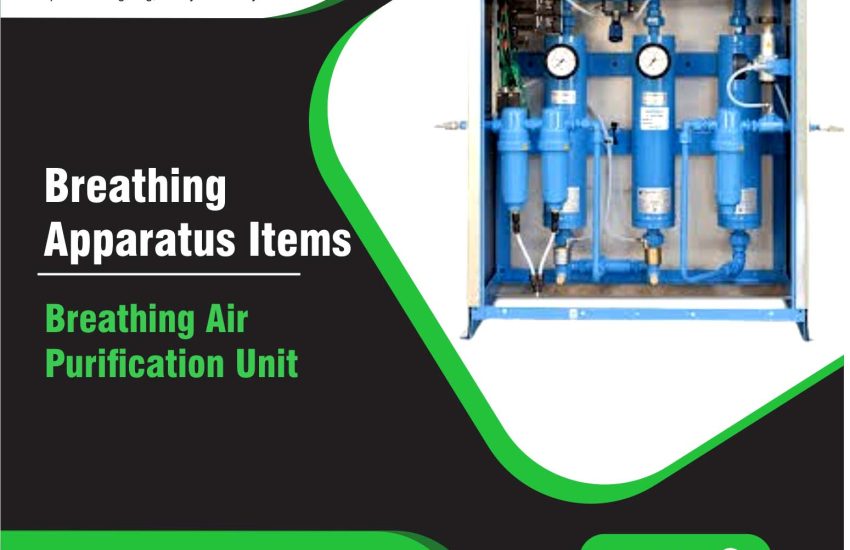A Breathing Air Purification Unit (BAPU) is essential in industrial, military, and emergency settings. It ensures workers breathe air free from harmful contaminants, protecting their health. This article will explore the Breathing Air Purification Unit specifications, its key features, and why it is crucial for maintaining safety in various industries.
What is a Breathing Air Purification Unit?
A Breathing Air Purification Unit filters and purifies air by removing dust, gases, vapors, and airborne contaminants. These units are crucial in environments with compromised air quality, such as confined spaces, chemical plants, oil rigs, mining sites, and hazardous workplaces. The BAPU ensures that workers can breathe safely while performing their tasks.
Breathing Air Purification Unit Specifications
Understanding the specifications of a Breathing Air Purification Unit helps you choose the right unit for your needs. Below are the key specifications typically found in a BAPU:
Filtration Efficiency
Filtration efficiency is a critical specification. High-quality BAPUs remove up to 99.9% of airborne contaminants, ensuring safe air for breathing. The filtration system includes pre-filters, carbon filters, and HEPA filters to remove dust, gases, and harmful vapors.
Airflow Rate
The airflow rate indicates how much purified air the unit can deliver per minute. This is usually measured in cubic feet per minute (CFM) or liters per minute (LPM). For most industrial settings, BAPUs deliver airflow rates between 100 and 200 CFM. The airflow rate ensures the unit can supply enough clean air for workers in the area.
Pressure Rating
The pressure rating determines the maximum operating pressure. BAPUs are available in low-pressure (4 to 6 bar) and high-pressure (up to 300 bar) versions. The pressure rating depends on the environment and the equipment being used.
Size and Portability
BAPUs come in various sizes, from compact, portable models to larger, stationary systems. Portable units are used in confined spaces or mobile environments, while stationary units are installed in industrial settings for continuous air purification. The portability ensures easy relocation when needed.
Power Source
BAPUs generally run on electricity, though some models use compressed air or battery power for portable applications. The power source impacts the unit’s mobility and functionality. Electric-powered units are suitable for stationary applications, while battery-powered or air-powered units are ideal for confined or remote areas.
Maintenance Requirements
Proper maintenance is key to ensuring BAPUs function effectively. Consider filter replacement, system inspections, and cleaning schedules when selecting a unit. Some models include maintenance alarms to notify users when filters need replacing or when the unit requires servicing.
Temperature and Humidity Control
Some BAPUs come with temperature and humidity control features, which help maintain optimal air quality. These features regulate the air’s temperature and moisture content, preventing respiratory issues or discomfort for workers.
Key Features of Breathing Air Purification Units
Several features enhance the performance and safety of BAPUs. Below are the key features:
- Multiple Filter Stages:
BAPUs typically include multi-stage filtration systems with pre-filters, activated carbon filters, and HEPA filters to remove harmful particles and gases. - Automatic Shutdown:
Some BAPUs feature an automatic shutdown mechanism that activates if the filtration system fails or detects a malfunction, ensuring worker safety. - Real-Time Monitoring:
Real-time monitoring systems track air quality, airflow rates, and pressure levels. These units send alerts when conditions fall outside safe ranges. - User-Friendly Interface:
BAPUs are equipped with touchscreen interfaces or simple control panels, making them easier to operate, even in high-pressure situations. - Compliance with Standards:
BAPUs often meet industry standards such as ISO 9001, ISO 23269, and EN 12021, ensuring compliance with health and safety regulations.
Importance of Breathing Air Purification Units in Safety
A Breathing Air Purification Unit is essential for maintaining safety in high-risk environments. Here are the key reasons why these units are crucial:
Protection Against Airborne Contaminants
BAPUs remove toxic chemicals, carbon monoxide, silica dust, and other dangerous airborne contaminants. This protection helps prevent serious health problems for workers.
Ensuring Compliance with Safety Regulations
In industries like oil and gas, chemical manufacturing, and mining, workers often operate in hazardous environments. By using BAPUs, employers ensure they comply with strict health and safety regulations, preventing long-term health issues.
Maintaining Air Quality in Confined Spaces
In confined spaces with limited ventilation, air quality can quickly decline. A Breathing Air Purification Unit ensures workers have access to clean air, reducing the risk of suffocation, poisoning, or respiratory illnesses.
Ensuring Continuous Protection
By providing continuous access to purified air, BAPUs help maintain worker concentration and health, which are essential in hazardous environments. These units offer ongoing protection and support worker safety.
Conclusion
A Breathing Air Purification Unit is an indispensable tool for workers exposed to hazardous airborne contaminants. Understanding the specifications and key features of BAPUs helps in selecting the appropriate unit for your needs. Whether in oil and gas, chemical industries, or mining, providing workers with purified air is critical for ensuring their safety and well-being.


